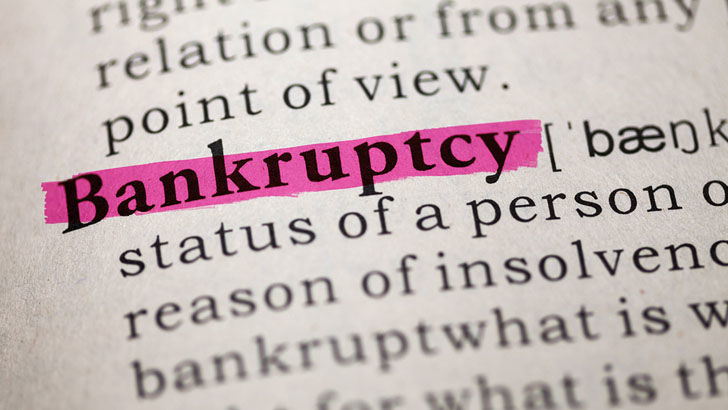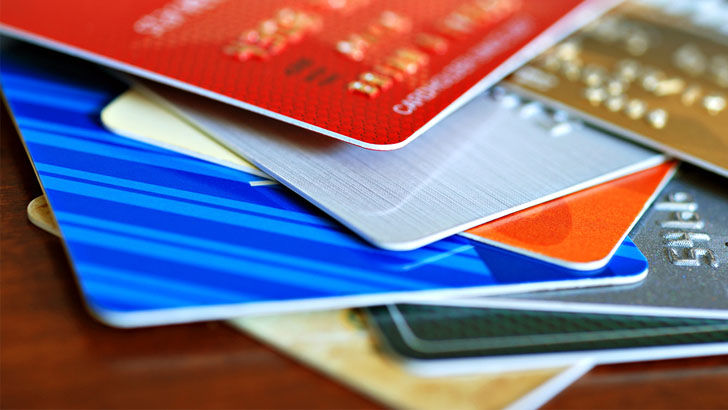Struggling with debt? Bankruptcy is not your only option
By Steph Nash
Bankruptcy vs. debt agreements
When it comes to debt, it's more common to be way in over your head than you think. In fact, Australia's personal debt is among the highest in the world. .
That's right - with a household debt to GDP ratio of 123% Australia ranks just behind Switzerland and Denmark.
If your debts are out of control you should start by talking to you creditors to see if they can allow you more time to repay your debts, negotiate an informal payment plan or agree to a smaller payment.
A financial counsellor may also be able to help you with budgeting and talk you through your options.
If it is too unmanageable you may feel like bankruptcy is the only choice but other formal arrangements to consider include debt agreements or personal insolvency agreements. Each option has different eligibility criteria (see table) but they all carry important consequences for your financial future. Before you take this path be sure to get independent advice. Let's take a look at the options.
Debt agreements
A debt agreement is a legally binding agreement between you and your creditors to pay an agreed amount that you can afford to pay over a set period of time (usually between three to five years). In most cases you can settle your debts for less than what is owed and t creditors will not be able to chase you for the remaining debt.
"All creditors will receive the same proportion of the amount you owe," explains the MoneySmart website. "For example, if you propose to repay 90% of all your outstanding debts over a 5-year period, then all creditors will get 90% of what you owe them."
You can appoint a debt agreement administrator or you can self-administer your agreement.
Not all debts are covered by a debt agreement - it is mainly for unsecured debt. For example a debt agreement can't be used to repay secured debts, however it can be used to repay the remaining debt if the underlying asset does not cover the full amount. Other debts such as child support, court-ordered payments, HECS and HELP debt, overseas debt and/or debts incurred by fraud cannot be paid out by a debt agreement.
You will still be liable for these debts after a debt agreement has finished explains MoneySmart.
Risks
There are definitely consequences to consider before proposing a debt agreement. If your proposal is rejected by your creditors, they can use it to apply to the court to make you bankrupt.
If an agreement is accepted, your name and details will be listed on the National Personal Insolvency Index (NPII) for five years from the date of the agreement, or two years after the end date - whichever is later. The agreement will also be listed on your credit report for up to five years (even longer in some cases), which can severely affect your borrowing power. You must disclose your agreement with any new creditors or, if you are a business owner or contractor, people doing business with you. It may prevent you from being able to practice certain regulated professions.
Personal insolvency agreements (PIA)
A personal insolvency agreement is similar to a debt agreement, with a few distinct differences. Firstly, there are no debt, asset or income limitations to be eligible for a PIA. Secondly, you will need to appoint a registered trustee to manage your agreement, who will ultimately take control of your assets. Thirdly you will be unable to manage a company until the agreement has ended. Finally if you enter a PIA your details will be permanently lodged on the NPII and on your credit file for up to five years, or longer in some cases
A PIA is also an act of bankruptcy. Rejection of your PIA can motivate your creditors to take you to court for bankruptcy.
There are fees to propose, lodge and manage a PIA. "The fees between trustees vary, discuss with them what their fees cover before you decide to go ahead. The total set up fee and any ongoing fees should be in your proposal," suggests AFSA.

Bankruptcy
Bankruptcy is a legal declaration that you can't repay your debts, which will release you from most of the debts you owe. You will be classified as bankrupt for a total of three years and one day, during which time a registered trustee will manage your affairs.
The trustee may sell off your assets to recoup your debts. They also have the power to request an extension of your bankruptcy period for up to eight years. You can nominate your own registered trustee, or you can elect for AFSA to appoint one for you.
Bankruptcy will be listed on your credit report for two years from the date your bankruptcy ends, or up to five years from the date you became bankrupt - whichever is later.
Bankruptcy doesn't cover all debts.
You may still be liable for Centrelink debts, Australian Tax Office debts, victims of crime debts and toll fines, so contact your creditors to see what options are available to you. Similar to a debt agreement, you're not covered for court-imposed debts, child support, and HECS and HELP debts.
If you have secured debt, your creditor has the right to take possession of the underlying asset. If the asset does not cover the full extent of the debt, the creditor can't pursue you for the shortfall.

Risks
If you earn over the income threshold ($54,736.50/pa with no dependents, more based on number of dependents), you will have to make mandatory set payments to your trustee. You will have to surrender 50% of the amount you earn above the income threshold, which may go towards your creditors.
Your trustee doesn't generally have to inform your employer that you are bankrupt. However there are a few exceptions, mostly limited to the financial services and public services industries. By law, you must not operate a company while you are bankrupt unless permission is granted by the courts. Bankruptcy may also infringe certain licenses required for your practice, which may affect accountants, solicitors and trades people.
Unless you have written permission from your trustee, you will be unable to travel overseas during the time of your bankruptcy. Failure to abide by this rule is a federal offence.
Bankruptcy may also prevent you the right from taking or continuing legal action. Your trustee will need to be informed of any legal action that you are participating in and can deny you court participation. You will be able to participate in legal proceedings that commenced before your bankruptcy if they were relevant to a personal injury sustained by you or a member of your family, or the death of a member of your family.
Personal insolvency criteria
| Debt Agreement | Personal Insolvency Agreement | Bankruptcy | |
|---|---|---|---|
| Australian connection | No residential or business connection required | Must have a residential or business connection | Must have a residential or business connection |
| Previous insolvency | Must not have been bankrupt, proposed a personal insolvency agreement or made a debt agreement in the previous 10 years | Must not have proposed another personal insolvency agreement in the previous six months | While previous insolvency alone doesn't make a person ineligible, the Official Receiver may not accept the petition if the debtor was previously bankrupt and some other conditions are met |
| Income threshold | Up to $82,104.75pa | No | No |
| Asset threshold | Up to the total value of $109,473 | No | No |
| Debt threshold | Up to a total of $109,473 | No | No |
Source: AFSA
Get stories like this in our newsletters.



